Dog Treadmill Workouts: Effective Fitness Tips for Your Pet
This post contains affiliate links. As an Amazon Associate I earn from qualifying purchases.
Exercising your dog is crucial for their health, but what do you do when outdoor activities are limited especially in the hot summer months?
A treadmill can provide an excellent indoor workout for your dog, offering year-round fitness options. Whether you have a large dog or a smaller breed, there are treadmill options designed to suit their needs.
Using a treadmill for your dog isn’t just for bad weather. It can also be a part of their regular fitness routine. By incorporating treadmill workouts, you can help your dog stay active and healthy, even when time or space is limited.
It’s also a safe and controlled way for dogs to get their daily exercise.
For those worried about their dog’s safety on a treadmill, many models come with features like sturdy caged sides and quieter operation to make the experience more comfortable for your pet.
Additionally, you can start with simple, short sessions and gradually increase the time and intensity as your dog becomes more accustomed to it.
Benefits of Dog Treadmill Workouts
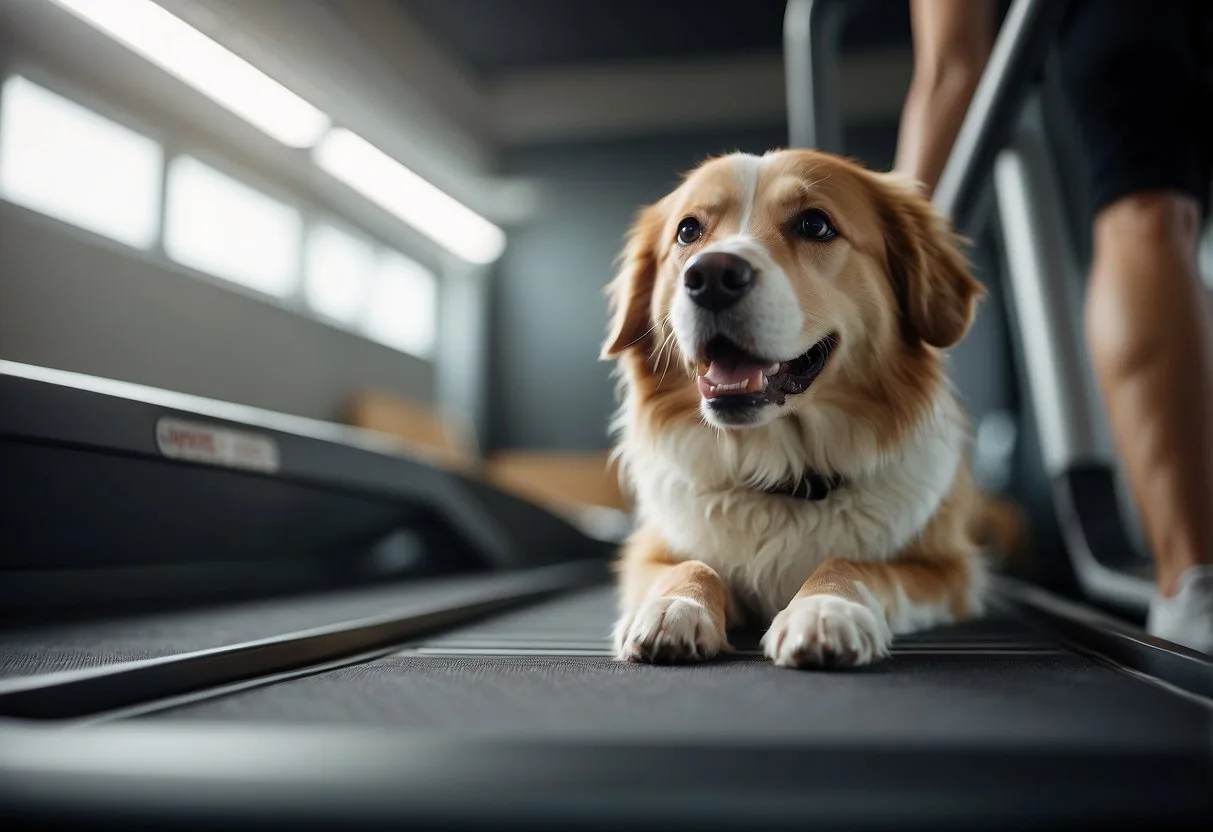
Using a treadmill for your dog’s exercise routine can address various health and fitness needs, including weight management, fitness and endurance, mental health, and rehabilitation.
Promotes Weight Management
Dog treadmills can help manage your dog’s weight effectively. Regular exercise is crucial, especially for dogs prone to obesity. A controlled treadmill environment lets you set the pace and duration, optimizing the workout to suit your dog’s needs.
Obesity in dogs can lead to health issues like joint problems and diabetes. By using a treadmill, you can ensure that your dog gets consistent exercise regardless of weather conditions. This helps your dog lose weight and stay fit.
Enhances Fitness and Endurance
A treadmill is an excellent tool for enhancing your dog’s fitness and endurance. Regular treadmill workouts can improve aerobic and anaerobic capacities.
This is beneficial for active dogs or those in training for sports or competitions.
Adjust the speed and incline settings to challenge your dog and gradually build their strength and power. This controlled environment allows you to tailor workouts to your dog’s level, enabling gradual progress and preventing injuries.
By consistently using a treadmill, your dog will build stamina and muscle tone, contributing to overall better fitness and physical health.
Improves Mental Health
Treadmill workouts are not just physical; they also provide mental stimulation. Routine exercise can reduce behavioral problems like aggression, anxiety, and excessive barking. The treadmill offers a new, engaging activity that keeps your dog focused and mentally active.
Mental workout is essential for dogs, especially those with high energy. Providing regular treadmill sessions can keep their minds sharp and their behavior well-balanced.
In addition to physical exercise, the routine and engagement of treadmill workouts can greatly enhance your dog’s mental well-being.
Supports Rehabilitation and Recovery
Treadmills are invaluable for dogs recovering from injuries or surgery. The controlled environment allows for safe and measured exercise, crucial for rehabilitation.
You can set specific parameters to ensure your dog exercises without overexerting.
Dogs with conditions like arthritis or hip dysplasia benefit from gentle exercise on a treadmill. It helps maintain joint mobility and muscle strength without putting too much strain on their bodies.
Rehabilitation sessions on a treadmill can speed up recovery and provide a consistent method to help your dog regain their health and activity levels.
Understanding Dog Treadmills
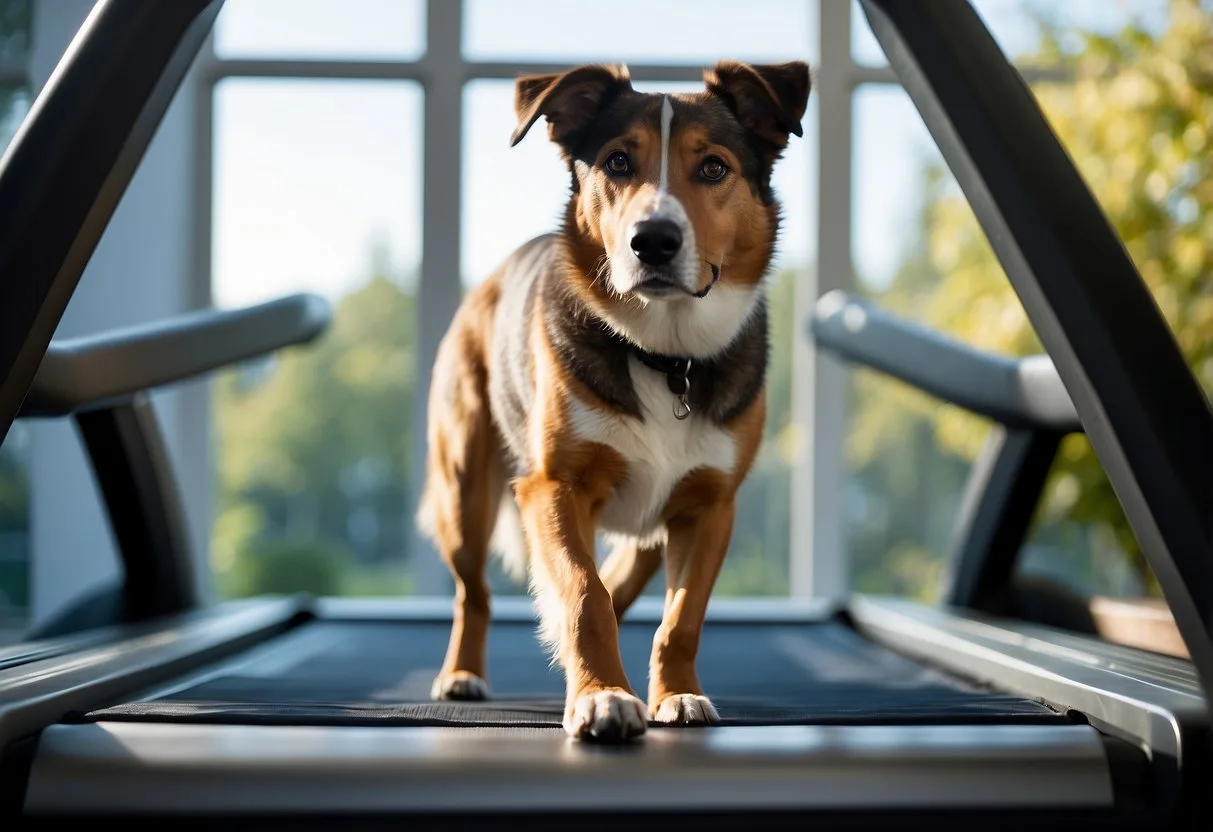
Dog treadmills are specialized exercise equipment designed to help your dog stay active and healthy. They come in various types and feature multiple design elements to accommodate the needs of different dogs.
Types of Dog Treadmills
There are several types of dog treadmills, each tailored for specific needs.
Standard Dog Treadmills: These machines resemble regular human treadmills but are modified for dogs. They have side panels to keep your pet from falling off and usually operate quietly to reduce anxiety.
Slatmills: These are powered by the dog’s movement. They are often used for training and exercise because they allow dogs to run at their own pace. Slatmills like PawPaw’s Dog Treadmill are popular among professional trainers and high-energy breeds.
DogPacer Treadmills: These are compact and portable. The DogPacer Minipacer treadmill, for example, is ideal for small to medium dogs. They are known for their sleek design and ease of use.
Key Features to Consider
When choosing a dog treadmill, several features are crucial.
Safety Features: Look for treadmills with side panels to prevent falls. Emergency stop buttons and safety harness attachments can also add extra security.
Speed Range: A versatile speed range is essential for accommodating different activity levels. Some treadmills offer incremental settings, allowing you to match your dog’s pace perfectly.
Programs and Controls: Some models come with preset programs and remote control options. For instance, the DogPacer treadmills often offer 12 preset programs, enabling varied and engaging workouts.
Deck Length: Measure your dog from nose to tail and ensure the treadmill deck is at least 2.5 times longer. This allows your dog to run comfortably.
Selecting the right dog treadmill can enhance your pet’s quality of life by providing consistent, safe, and enjoyable exercise options.
Training Your Dog to Use a Treadmill
Helping your dog get comfortable with a treadmill can provide them with great indoor exercise. It involves introducing the machine, setting routines, and gradually increasing intensity to build strength and endurance.
Introduction to the Treadmill
- Start by introducing your dog to the treadmill while it is turned off.Let your dog explore it at their own pace and reward them with treats for any positive interaction. This creates a positive association with the treadmill.
- Stand on the treadmill and call your dog to join you. Offer a treat when they hop on. With these steps, your dog will begin to feel more comfortable and curious. Always use positive reinforcement to build their confidence.
- Turn the treadmill on at the lowest speed. You should be ready to adjust if your dog shows signs of stress. Lots of praise and treats can help them stay calm and focused.
Establishing a Routine
Consistency is key in establishing an exercise routine. Start with short sessions, around 5-10 minutes, to help your dog get used to the movement.
Gradually increase the time as they become more comfortable.
Use the same commands and actions each time to build a predictable routine. Encourage your dog to walk or trot at a slow pace initially. This helps them warm up and adjust to the treadmill’s motion.
Incorporating a routine helps in conditioning your dog. Always begin with a warm-up and end with a cool-down period to ensure your dog’s muscles are properly adjusted for physical activity.
Regular schedules reinforce good habits and improve overall fitness.
Building Up Intensity
Once your dog is comfortable with the treadmill, you can start to build up the intensity. Gradually increase the speed and duration of the workout.
Add short intervals of higher speeds and inclines to challenge your dog’s strength and endurance.
Make sure to monitor your dog’s response to these changes. If they seem to struggle, ease back to a level where they are comfortable.
Positive reinforcement remains crucial; always reward your dog for their efforts.
Structured workouts with varying speeds and settings can help with conditioning and strength. Keep sessions engaging and adequately challenging to maintain your dog’s interest and fitness.
Subscribe to our newsletter to receive the latest dog-related news, tips, and product reviews.
Safety and Precautions
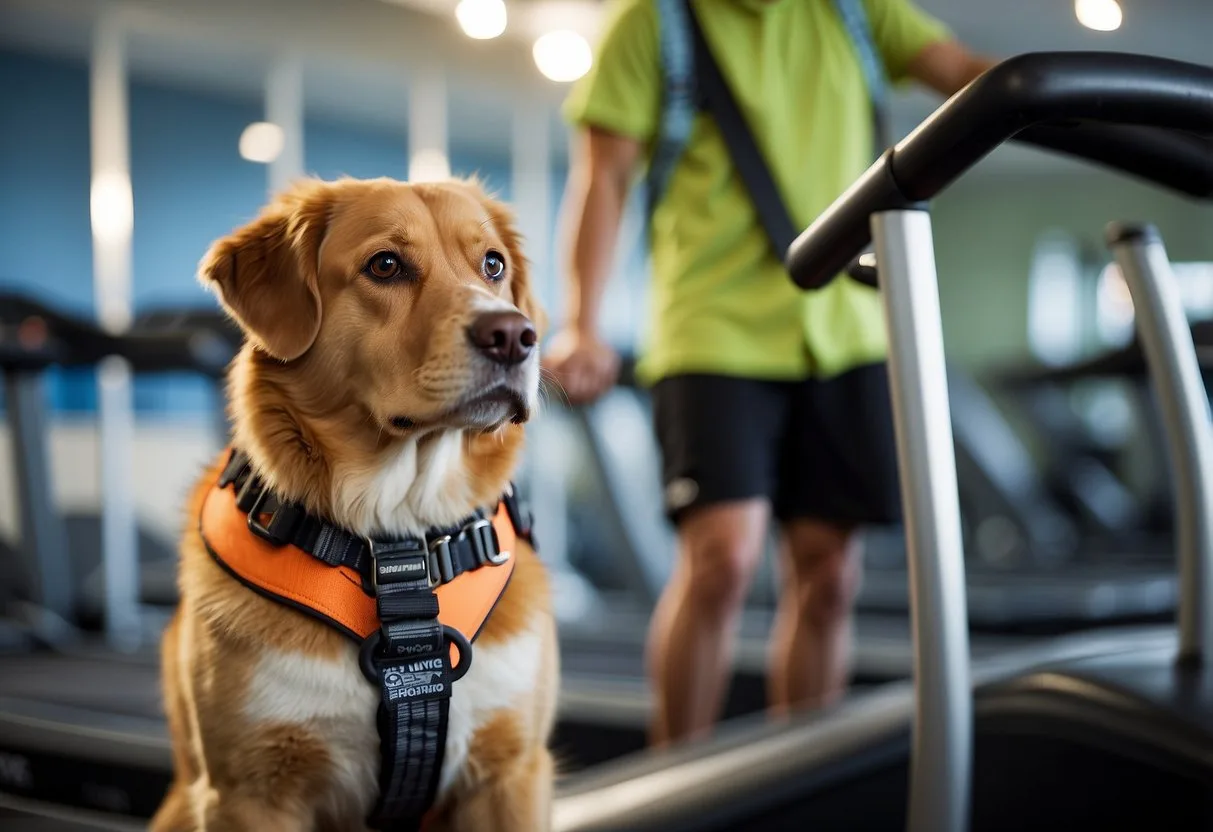
Taking some key precautions can ensure your dog stays safe while using a treadmill. Focus on choosing a suitable treadmill and carefully monitor your dog’s workouts.
Choosing the Right Treadmill
It’s important to select a treadmill that fits your dog’s size and exercise needs. For large dogs, a treadmill designed specifically for dogs might be necessary, while small dogs can often use human treadmills.
Look for safety features like side rails and a slow start option.
Make sure the treadmill is 1.5–2 times the dog’s body length. This allows your dog to maintain a natural gait.
A treadmill with a low-speed setting is essential so your dog can walk comfortably. Always use a harness instead of a collar to avoid neck injuries.
Monitoring Workouts
Keeping an eye on your dog during treadmill workouts is crucial. Start with the lowest speed and gradually increase it as your dog becomes more comfortable.
Offering treats can help your dog stay focused and encouraged.
Watch for signs of fatigue or distress in your dog. Frequent breaks are important, especially in the beginning.
Consult with your veterinarian to tailor the treadmill routine to your dog’s specific health needs and fitness level. This ensures a safe, productive workout regimen.
Exercise Routines and Programs
When using a treadmill for your dog, it’s important to have a structured routine that suits their fitness level and needs. This can involve customizing the workout intensity or using pre-set exercise programs available on some treadmills.
Customizing Workout Intensity
Customizing workout intensity is key to keeping your dog engaged and fit. Start with a warm-up to ease your dog into the exercise. A simple routine could be:
- 2 minutes Walk
- 2 minutes Jog
- 1 minute Run
Adjust the speed and incline to match your dog’s fitness. For a beginner, keep the speed slow and the incline flat. As your dog gets more comfortable, gradually increase both. Intervals can help build endurance. For example:
- 30 seconds Sprint
- 1 minute Walk
Repeat this cycle for six minutes. Make sure to monitor your dog’s comfort and adjust as necessary.
Using Pre-Set Exercise Programs
Some treadmills come with 12 preset programs designed for various fitness levels. These programs can provide structured workouts without manual adjustments. They usually include warm-ups, intervals, and cooldowns.
For instance, a pre-set program might start with a slow walk to warm up, move into jogging intervals, and then finish with a cooldown.
Programs that mix different speed and incline settings keep your dog’s routine varied and prevent boredom. Follow manufacturer recommendations for selecting the right program for your dog’s size and fitness level.
Using these features can ensure your dog gets a balanced workout that improves both physical fitness and mental stimulation.
Health and Wellness Through Treadmill Workouts
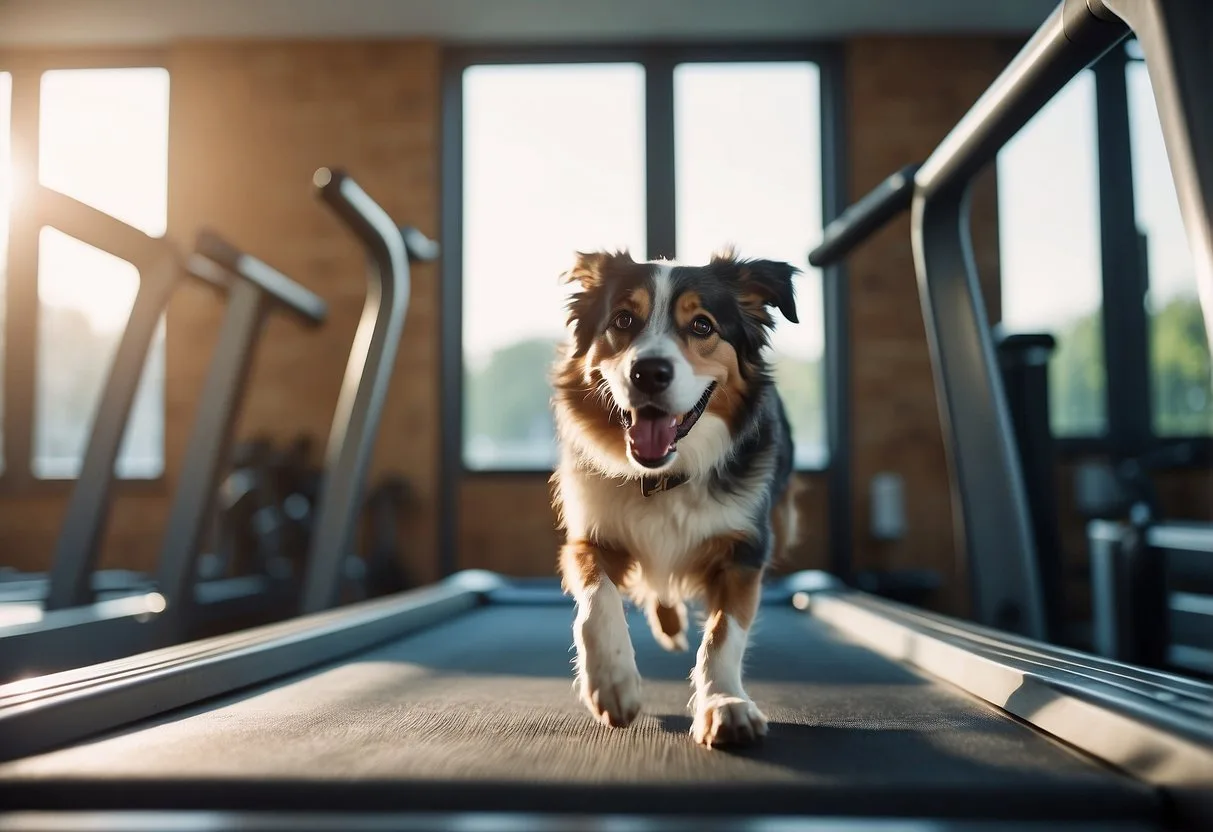
Treadmill workouts can contribute significantly to your dog’s overall health. These exercises offer a structured and safe way to improve your dog’s physical fitness, especially when outdoor conditions are not ideal.
Impact on Joint Health
Physical exercise on a treadmill can have several benefits for your dog’s joint health. Regular, moderate activity helps maintain joint flexibility and strength.
This is particularly important for dogs prone to arthritis as it can lessen the symptoms and improve mobility.
Treadmill use provides a controlled environment with a flat, predictable surface, reducing the impact on your dog’s joints compared to uneven outdoor terrain.
You can also set a steady pace that matches your dog’s comfort level, ensuring the exercise is gentle yet effective.
This type of exercise can also help dogs recover from injury or surgery, as it allows for low-impact movement.
Always consult your veterinarian before starting any new exercise regimen, especially if your dog has existing health issues.
Advanced Treadmill Workouts for Dogs
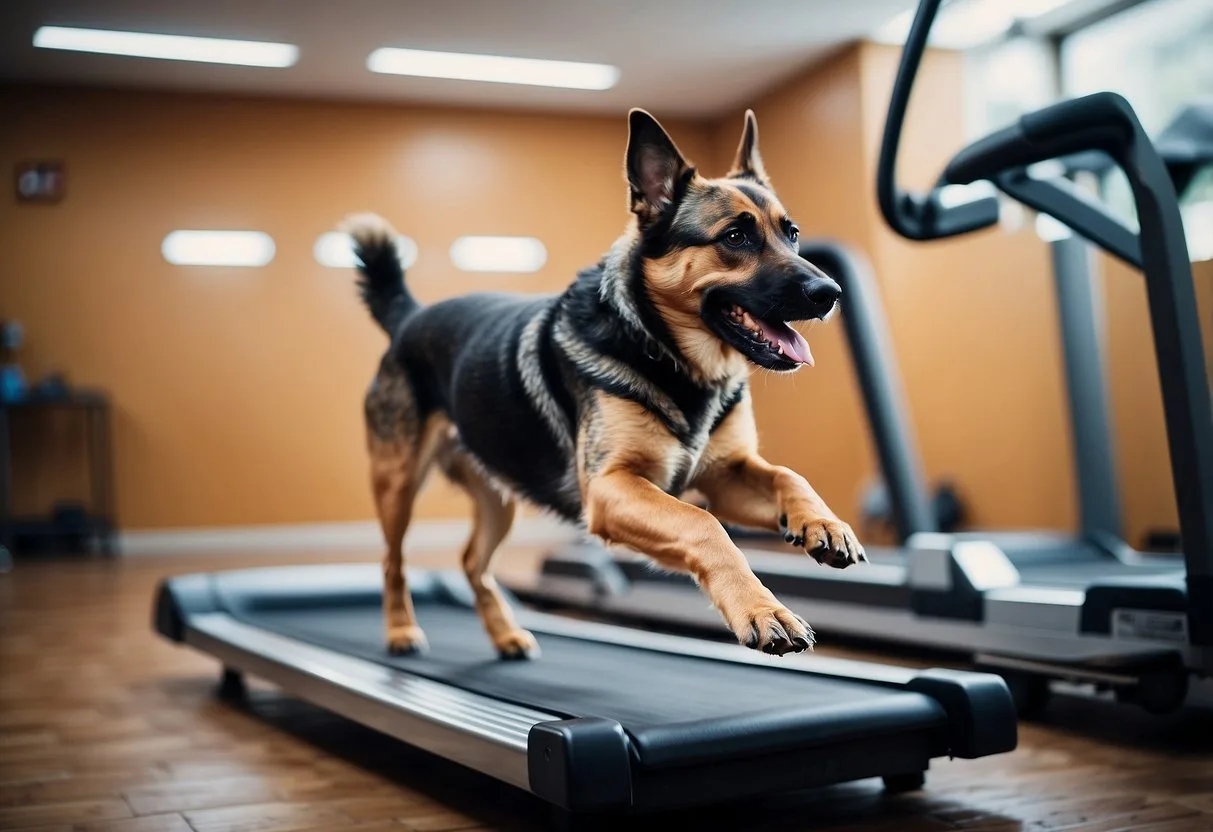
Advanced treadmill workouts can help improve your dog’s power, strength, and overall fitness. By tailoring the exercises, you can effectively train your dog for various dog sports and high-intensity routines.
Training for Dog Sports
Training your dog for sports requires a focus on power and conditioning. You can use the treadmill to simulate the demands of these activities.
Start by setting the treadmill at a moderate speed to warm up. Gradually increase the speed and incline to challenge their muscles.
Sprint intervals are effective in building strength. Alternate between 1-minute sprints and 2-minute jogs. This will keep your dog engaged and mimic the bursts of energy needed in sports like agility and flyball.
Include specific drills that focus on coordination. For example:
- Lateral movements: Use the treadmill’s adjustable settings to encourage side stepping.
- Jump intervals: Integrate short periods where your dog has to jump on and off the treadmill.
High-Intensity Interval Training
High-Intensity Interval Training (HIIT) on a treadmill can massively boost your dog’s fitness levels. It involves short bursts of intense activity followed by rest periods.
Start with a warm-up: 2 minutes walking, 2 minutes jogging, and 1-minute running.
Set the treadmill for 6-minute power sprints. Alternate between 30 seconds of sprinting at high speed and 30 seconds of walking. This type of training develops both speed and endurance.
Another effective HIIT exercise is to vary the incline during the workout. For example, switch between a high incline for 30 seconds and flat running for the next 30. This not only improves strength but also conditions the muscles more efficiently.
By using these advanced treadmill workouts, you can better prepare your dog for competitive sports and enhance their fitness level.

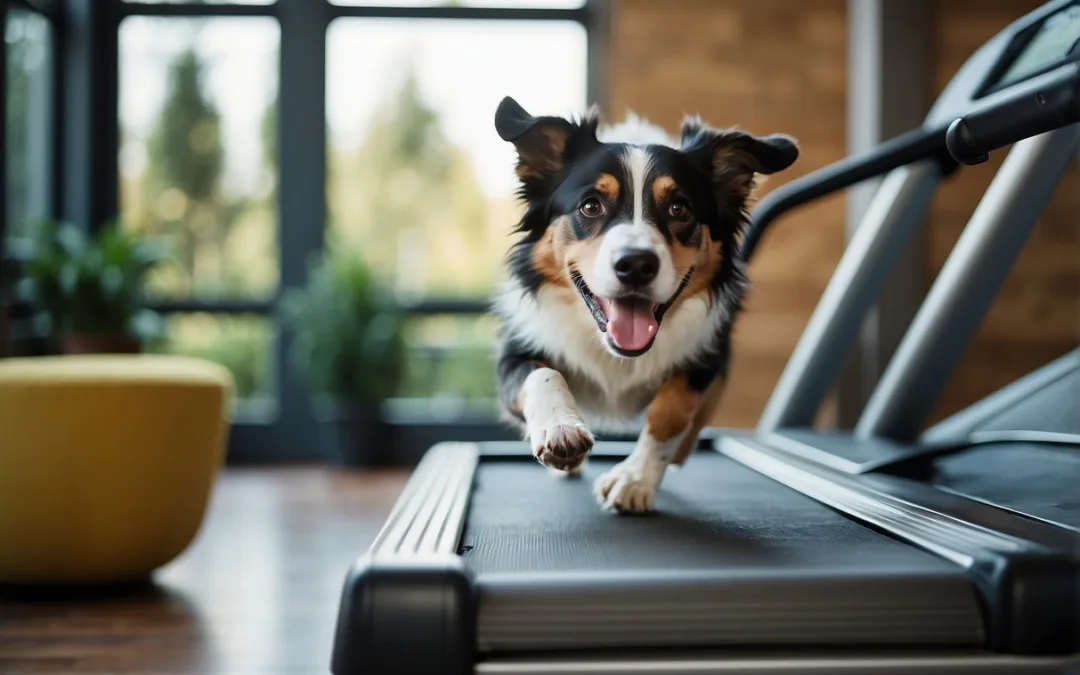

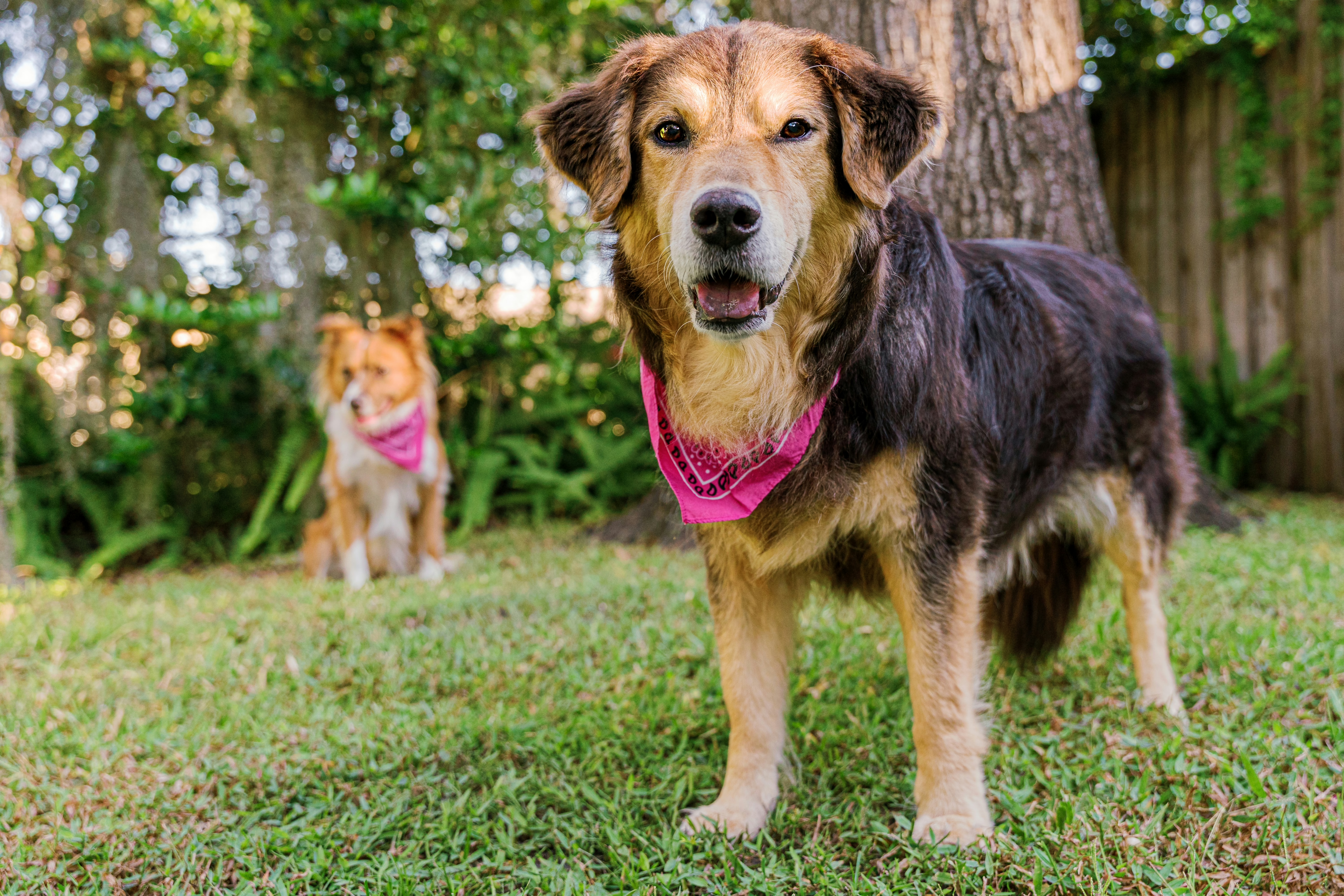

Recent Comments